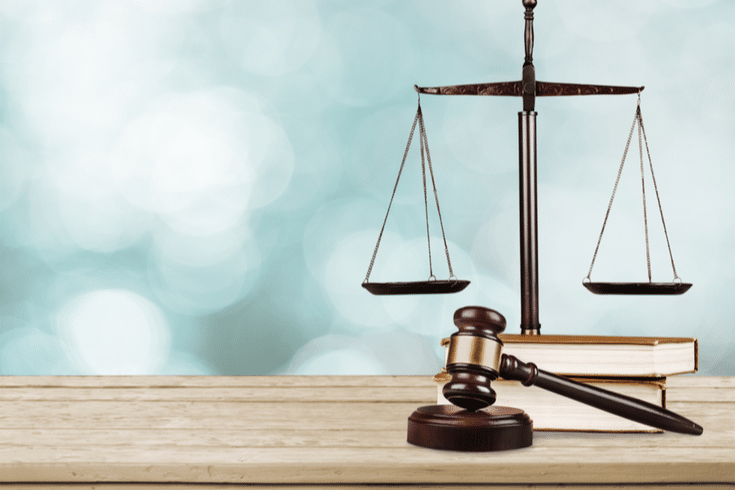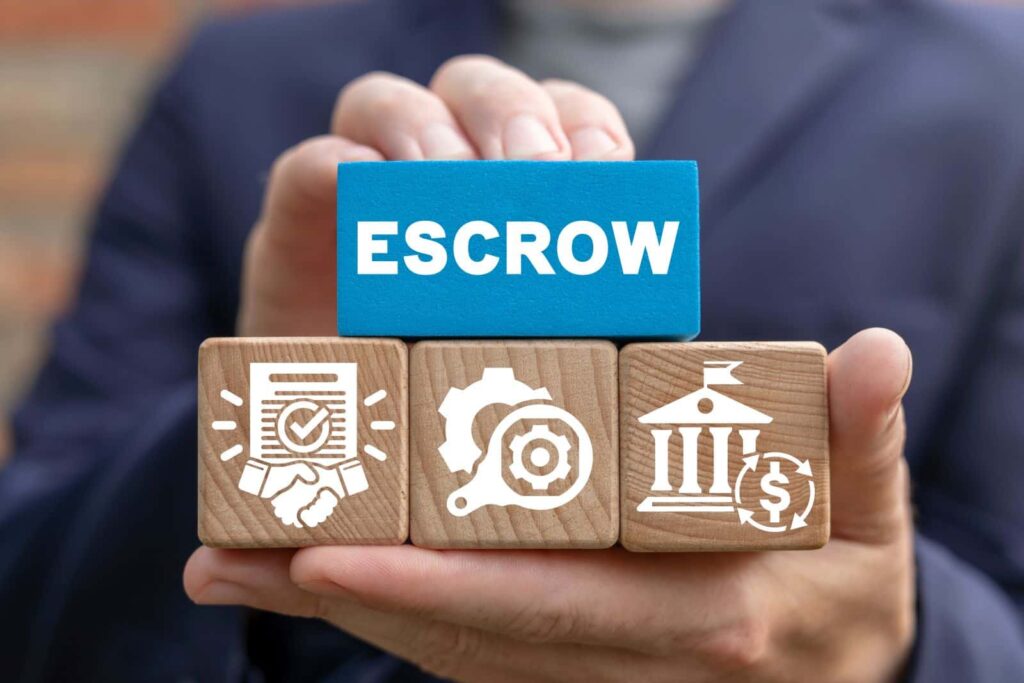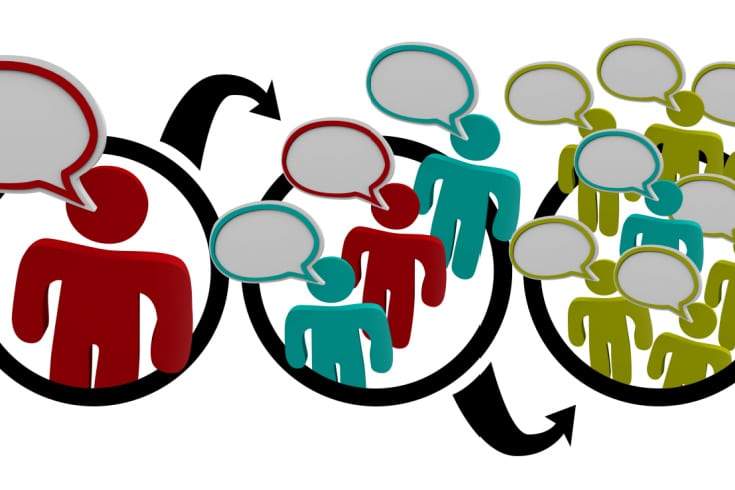What is the 'Japanese Pharmaceutical and Medical Device Act (Formerly the Japanese Pharmaceutical Affairs Law)'? Explaining its Purpose, Regulatory Targets, and Advertising Regulations

When you hear the term “Japanese Pharmaceutical Affairs Law,” many people might think, “It’s a law related to medicine,” or “It’s a law concerning pharmacies and medical institutions.” However, in reality, this law covers a very wide range of regulations, and within the Japanese Pharmaceutical Affairs Law, there are numerous rules that various types of businesses must adhere to.
In order to avoid unknowingly violating the Japanese Pharmaceutical Affairs Law, it is necessary to have a good understanding of it.
In this article, we will explain the purpose of the Japanese Pharmaceutical Affairs Law, its regulatory targets, and its advertising regulations.
What is the Pharmaceuticals and Medical Devices Act (Formerly the Pharmaceutical Affairs Act)?
From the Pharmaceutical Affairs Act to the Pharmaceuticals and Medical Devices Act

The Pharmaceuticals and Medical Devices Act is a law that regulates necessary aspects such as manufacturing, labeling, sales, distribution, and advertising of pharmaceuticals and medical devices. Its official name is “Act on Securing Quality, Efficacy and Safety of Products Including Pharmaceuticals and Medical Devices”.
Formerly known as the “Pharmaceutical Affairs Act”, it was revised in 2013 (Heisei 25) to adapt to advancements in medicine, pharmacy, and electronic engineering. The name was also changed to the “Pharmaceuticals and Medical Devices Act”.
While the Pharmaceuticals and Medical Devices Act regulates pharmaceuticals and similar products, its regulations often apply even to those who are not pharmaceutical retailers like pharmacies or drug stores. For example, thermometers are considered “medical devices”, so their manufacturing and advertising are regulated. Also, anyone can violate the Pharmaceuticals and Medical Devices Act if they use expressions that imply a connection to disease prevention when advertising cosmetics or food.
As such, the regulations of the Pharmaceuticals and Medical Devices Act are extensive, and if you do not correctly understand the regulated items and the content of the regulations, you may inadvertently violate the Pharmaceuticals and Medical Devices Act.
The Purpose of the Pharmaceuticals and Medical Devices Act
The purpose of the Pharmaceuticals and Medical Devices Act is stipulated in Article 1.
This Act aims to improve public health by regulating the quality, efficacy, and safety of pharmaceuticals, quasi-drugs, cosmetics, medical devices, and regenerative medicine products (hereinafter referred to as “pharmaceuticals, etc.”), preventing and controlling the occurrence and spread of health hazards caused by their use, taking measures related to the regulation of designated drugs, and taking necessary measures to promote the research and development of pharmaceuticals, medical devices, and regenerative medicine products that are particularly necessary for medical care.
Act on Securing Quality, Efficacy and Safety of Products Including Pharmaceuticals and Medical Devices, Article 1
Article 1 can be summarized as follows:
- Regulate the safety of five items: pharmaceuticals, quasi-drugs, cosmetics, medical devices, and regenerative medicine products (pharmaceuticals, etc.)
- Regulate “designated drugs” (dangerous drugs)
- Promote the research and development of pharmaceuticals, medical devices, and regenerative medicine products
The Pharmaceuticals and Medical Devices Act establishes regulations in line with these three objectives.
Main Regulatory Targets and Definitions of the Japanese Pharmaceutical and Medical Device Act

In order to avoid violating the Japanese Pharmaceutical and Medical Device Act, it is necessary to correctly understand its regulatory targets.
The main regulatory targets of the Japanese Pharmaceutical and Medical Device Act, as stated in Article 1, are five: pharmaceuticals, quasi-drugs, cosmetics, medical devices, and regenerative medicine products. Let’s confirm the definitions of each.
Pharmaceuticals
When we hear the term “pharmaceuticals,” many of us might think of prescription drugs or fever reducers that we get from the pharmacy. However, in reality, many other items also fall under the category of “pharmaceuticals.”
The Japanese Pharmaceuticals and Medical Devices Act (薬機法) defines “pharmaceuticals” in Article 2, Paragraph 1.
Under this law, “pharmaceuticals” refer to the following:
1. Items listed in the Japanese Pharmacopoeia
2. Items intended for use in the diagnosis, treatment, or prevention of human or animal diseases, excluding machinery and equipment (machinery, dental materials, medical supplies, sanitary goods, and programs (instructions for electronic computers, combined to achieve a certain result. The same shall apply hereinafter.) and the recording media on which they are recorded. The same shall apply hereinafter.) (excluding quasi-drugs and regenerative medicine products)
3. Items intended to affect the structure or function of the human or animal body, excluding machinery and equipment (excluding quasi-drugs, cosmetics, and regenerative medicine products)
Pharmaceuticals and Medical Devices Act, Article 2, Paragraph 1
The “Japanese Pharmacopoeia” mentioned in item 1 is a set of standards established by the government that includes quality standards for pharmaceuticals. It lists not only chemical drugs but also items like olive oil and honey. If these items are not specifically intended for food use, they are considered “pharmaceuticals.”
Item 2 refers to items used for the purpose of diagnosing, treating, or preventing diseases or injuries. Examples include vaccines and antigenicity test kits.
Item 3 refers to items intended to affect the human body or its functions. An example of this would be contraceptive pills.
It’s important to note that the Pharmaceuticals and Medical Devices Act regulates based on intended use. Even if an item has no actual effect on the diagnosis, treatment, or prevention of diseases or injuries, if it is sold for such purposes, it will be regulated as a “pharmaceutical.” For example, even if an item is sold as food, if it is advertised as “purifying the blood,” it is considered to be claiming medicinal effects and is therefore classified as a “pharmaceutical.”
The main regulations for pharmaceuticals, in simple terms, relate to manufacturing and sales licenses. In other words, without obtaining a license from the administrative agency, manufacturing or selling pharmaceuticals is not permitted.
Quasi-Drugs (医薬部外品)
I believe that few people have a correct understanding of “Quasi-Drugs” (医薬部外品). Broadly speaking, quasi-drugs refer to substances that have an effect on the human body, but the impact is milder compared to pharmaceuticals, and they are subject to less stringent regulations than pharmaceuticals.
The Japanese Pharmaceutical Affairs Law (薬機法) defines quasi-drugs in Article 2, Paragraph 2.
In this law, “quasi-drugs” refer to the following items that have a mild effect on the human body:
1. Items used for the purposes listed from (a) to (c) below (excluding items used for the purposes defined in the previous paragraph’s second or third items), which are not mechanical devices or similar:
(a) Prevention of nausea and other discomforts or prevention of bad breath or body odor
(b) Prevention of heat rash, chafing, etc.
(c) Prevention of hair loss, hair growth or hair removal
2. Items used for the purpose of preventing rats, flies, mosquitoes, fleas, and other similar organisms for the health of humans or animals (excluding items used for the purposes defined in the previous paragraph’s second or third items), which are not mechanical devices or similar.
3. Among the items used for the purposes defined in the previous paragraph’s second or third items (excluding items listed in the previous two items), those designated by the Minister of Health, Labour and Welfare.
Pharmaceuticals and Medical Devices Act, Article 2, Paragraph 2
Looking at the above provisions, it can be understood that quasi-drugs refer to items that have a mild effect on the human body and are used for ① nausea, etc., ② preventing rats, etc., and ③ items designated by the Minister of Health, Labour and Welfare.
Examples of items that fall under ① include breath sprays, mouthwash, razor burn prevention cream, hair growth products, and hair removal products.
Examples of items that fall under ② include mosquito coils, mouse traps, and insecticides.
③ is a provision that stipulates that even items that would normally fall under “pharmaceuticals” can be considered “quasi-drugs” if designated by the Minister of Health, Labour and Welfare. This is a provision intended to promote distribution of items that are considered to have no impact on public health even if sold at general retail stores due to their mild effects.
Concrete examples of ③ include contact lens disinfectant, sterilizing disinfectant, intestinal regulators, and hair dye.
Quasi-drugs, like pharmaceuticals, have a certain effect on the human body, but compared to pharmaceuticals, their personalityistic is that their effect is “mild”. For example, insecticides were given as an example for ②, but if they contain ingredients that have a significantly strong effect on the human body, they would fall under “pharmaceuticals” rather than “quasi-drugs”.
The main regulatory content for quasi-drugs, simply put, is manufacturing approval. On the other hand, there is no need to obtain approval for sales. In other words, quasi-drugs can be freely sold at general retail stores. However, as will be mentioned later, regulations do apply to advertising.
Cosmetics
When we hear the term “cosmetics,” many of us tend to think of products used by women to enhance their appearance. However, the term “cosmetics” as defined by the Japanese Pharmaceuticals and Medical Devices Act (薬機法) encompasses a much broader range of products.
The Pharmaceuticals and Medical Devices Act defines “cosmetics” in Article 2, Paragraph 3.
Under this law, “cosmetics” refers to products intended for use on the human body to cleanse, beautify, enhance attractiveness, alter appearance, or maintain the health of the skin or hair, through methods such as application, spraying, or other similar methods, and whose effects on the human body are mild. However, this does not include products that, in addition to these intended uses, are also intended for use for the purposes specified in item (ii) or (iii) of paragraph (1), and quasi-drugs.
Pharmaceuticals and Medical Devices Act, Article 2, Paragraph 3
Reading the above provision, it becomes clear that “cosmetics” not only include typical women’s cosmetics that “beautify, enhance attractiveness, and alter appearance,” but also products like shampoo and toothpaste that “cleanse the human body,” and skincare products and body lotions that “maintain the health of the skin or hair.”
While cosmetics do have certain effects on the human body, they do not include products with medicinal or antibacterial effects. For example, a simple toothpaste used to remove dirt is considered a cosmetic, but a toothpaste that claims to prevent periodontal disease, which is expected to have a medicinal effect, may be treated as a quasi-drug or a pharmaceutical product.
Furthermore, cosmetics are limited to products that are applied to the body, so products that are ingested or injected into the body are not considered cosmetics.
The main regulations for cosmetics involve manufacturing permissions and notifications, which are less stringent than those for quasi-drugs. Cosmetics can be freely sold in general retail stores. However, as will be discussed later, there are regulations regarding advertising. Also, the range of efficacy and effects that can be described as cosmetics is limited.
Reference: Notification of the Director of the Pharmaceutical and Food Safety Bureau dated July 21, 2011 (Heisei 23) (2011), “Revision of the Scope of Efficacy of Cosmetics[ja]“
Medical Devices
Medical devices typically include medical supplies such as scalpels and syringes, but they are not limited to these.
The Japanese ‘Pharmaceuticals and Medical Devices Act’ defines medical devices in Article 2, Paragraph 4.
“Medical devices” in this Act refers to machinery, equipment, etc. (excluding regenerative medical products) that are intended to be used for the diagnosis, treatment, or prevention of human or animal diseases, or to affect the structure or function of the human or animal body, and are specified by Cabinet Order.
Pharmaceuticals and Medical Devices Act, Article 2, Paragraph 4
Reading the above provision, we can understand that medical devices are ① “machinery, equipment, etc.” intended to affect the structure or function of the body, or ② “machinery, equipment, etc.” intended for diagnosis, treatment, or prevention, and are specified by Cabinet Order.
The definition of “machinery, equipment, etc.” is indicated in Article 2, Paragraph 1, Item 2 as follows:
This refers to machinery, equipment, dental materials, medical supplies, sanitary supplies, and programs (instructions for electronic computers that are combined to achieve a result. The same shall apply hereinafter.) and the recording media on which they are recorded.
Pharmaceuticals and Medical Devices Act, Article 2, Paragraph 1, Item 2
For example, fitness equipment is intended to build muscle, so it does have the purpose of “affecting the structure or function of the body,” but it does not fall under the “machinery, equipment, etc. specified by Cabinet Order,” so it is not a medical device. On the other hand, a massage device is a “machinery, equipment, etc. intended to affect the structure or function of the body and specified by Cabinet Order,” so it is considered a medical device.
Other examples of medical devices include thermometers, sutures, contraceptives, and disease diagnosis programs.
Medical devices are classified into “General Medical Devices,” “Controlled Medical Devices,” and “Highly Controlled Medical Devices” based on factors such as their risk and intended use.
The main regulatory requirements for medical devices, in simple terms, are approvals and notifications related to manufacturing, sales, lending, and repair. The degree of regulation varies depending on the classification of the medical device. For example, “Highly Controlled Medical Devices” require approval for sales, while “General Medical Devices” do not require approval or notification for sales, and can be sold freely.
Regenerative Medicine Products
The regulation of regenerative medicine products is a system established during the revision in 2014 (Gregorian calendar year). As exemplified by the development of iPS cells by Professor Shinya Yamanaka, the progress of regenerative medicine is remarkable. However, there are many unknown aspects regarding its risks. To promote its development while ensuring safety, a new system was introduced.
The Japanese Pharmaceuticals and Medical Devices Act defines regenerative medicine products in Article 2, Paragraph 9.
In this law, “regenerative medicine products” refer to the following items (excluding quasi-drugs and cosmetics) as defined by a Cabinet Order:
1. Among the items intended for use in medical or veterinary treatment, those that have been cultured or otherwise processed in human or animal cells
(i) Reconstruction, repair, or formation of human or animal body structure or function
(ii) Treatment or prevention of human or animal diseases
2. Among the items intended for use in the treatment of human or animal diseases, those that are introduced into human or animal cells and contain genes expressed in these bodies
Pharmaceuticals and Medical Devices Act, Article 2, Paragraph 9
Looking at the above provisions, it can be seen that there are two main types of regenerative medicine products. The first is “those that have been cultured or otherwise processed in human or animal cells”. The second is “those that are introduced into human or animal cells and contain genes expressed in these bodies”.
What is Advertising Regulation under the Japanese Pharmaceutical and Medical Device Act?

Here, we will explain the advertising regulations under the Japanese Pharmaceutical and Medical Device Act, a regulation that many people need to be aware of.
While advertisements for pharmaceuticals and other products provide information to the public, excessive advertising can lead to the circulation of inferior products and misconceptions about safety, potentially harming public health. Therefore, the Japanese Pharmaceutical and Medical Device Act regulates advertising for pharmaceuticals and other products in Articles 66 to 68.
No person shall advertise, describe, or disseminate false or exaggerated information about the name, manufacturing method, efficacy, effect, or performance of pharmaceuticals, quasi-drugs, cosmetics, medical devices, or regenerative medicine products, whether explicitly or implicitly.
2. Advertising, describing, or disseminating articles that may be misunderstood as being guaranteed by a doctor or other person regarding the efficacy, effect, or performance of pharmaceuticals, quasi-drugs, cosmetics, medical devices, or regenerative medicine products shall be deemed to fall under the preceding paragraph.
3. No person shall imply abortion or use obscene documents or drawings in relation to pharmaceuticals, quasi-drugs, cosmetics, medical devices, or regenerative medicine products.
Article 66 of the Act on Securing Quality, Efficacy and Safety of Products Including Pharmaceuticals and Medical Devices
Article 66, paragraph 1, prohibits false and exaggerated advertising about the name, manufacturing method, efficacy, effect, or performance of pharmaceuticals and other products. Over-advertising the efficacy and effects can lead to misuse and potentially worsen medical conditions. This is what Article 66, paragraph 1, regulates.
The term “advertising” here refers to something that meets the following three requirements. (Reference: Notification of the Director of the Pharmaceutical Safety Bureau of the Ministry of Health, Labour and Welfare dated September 29, 1999 (Heisei 11) (Pharmaceutical Supervision No. 148) “On the applicability of advertising for pharmaceuticals, etc. under the Pharmaceutical Affairs Law[ja]“)
- It clearly intends to attract customers (to stimulate their desire to purchase)
- The product name of the specific pharmaceutical, etc. is clearly stated
- It is in a state that can be recognized by the general public
Article 66, paragraph 2, stipulates that articles that may be misunderstood as being guaranteed by a doctor or other person regarding the efficacy, effect, or performance of pharmaceuticals, etc. are considered false and exaggerated advertising.
Article 66, paragraph 3, stipulates that one must not imply abortion or use obscene expressions in relation to pharmaceuticals, etc.
For pharmaceuticals or regenerative medicine products that are intended to be used for cancer or other special diseases and that pose a particularly high risk of harm if not used under the guidance of a physician or dentist, the Minister of Health, Labour and Welfare may designate such pharmaceuticals or regenerative medicine products by ordinance and may take necessary measures to ensure their proper use, such as restricting advertising methods targeting the general public other than medical professionals.
2. When the Minister of Health, Labour and Welfare seeks a Cabinet decision on the enactment or abolition of the ordinance designating special diseases under the preceding paragraph, he/she must first listen to the opinions of the Pharmaceutical Affairs and Food Sanitation Council. However, this does not apply to matters deemed minor by the Pharmaceutical Affairs and Food Sanitation Council.
Article 67 of the Act on Securing Quality, Efficacy and Safety of Products Including Pharmaceuticals and Medical Devices
Article 67 allows the government to set restrictions and other measures on advertising methods for pharmaceuticals intended for use in special diseases. In fact, advertising for pharmaceuticals intended for use in cancer, sarcoma, and leukemia is prohibited by ordinance (Article 228-10, paragraph 1, and Appendix 5 of the Enforcement Regulations of the Pharmaceutical and Medical Device Act).
No person shall advertise the name, manufacturing method, efficacy, effect, or performance of pharmaceuticals or medical devices or regenerative medicine products specified in Article 14, paragraph 1, Article 23-2-5, paragraph 1, or Article 23-2-23, paragraph 1, that have not yet received approval or certification under Article 14, paragraph 1, Article 19-2, paragraph 1, Article 23-2-5, paragraph 1, Article 23-2-17, paragraph 1, Article 23-25, paragraph 1, or Article 23-37, paragraph 1, or Article 23-2-23, paragraph 1.
Article 68 of the Act on Securing Quality, Efficacy and Safety of Products Including Pharmaceuticals and Medical Devices
Article 68 prohibits advertising for unapproved pharmaceuticals, medical devices, and regenerative medicine products. The effects and efficacy are only publicly recognized after approval, so advertising them before approval can cause confusion. This is what Article 68 regulates.
It is particularly important to note that the prohibition of false and exaggerated advertising (Article 66) and the prohibition of advertising for unapproved pharmaceuticals, etc. (Article 68) apply to “any person”.
These regulations apply to “any person”, i.e., “all persons”. They apply not only to manufacturers and sellers of pharmaceuticals, etc., but also to those who advertise at the request of these businesses.
Therefore, mass media such as television and newspapers, advertising agencies, affiliates, influencers, and others need to be careful not to violate the Pharmaceutical and Medical Device Act when introducing pharmaceuticals and cosmetics.
Also, even products that are not originally subject to regulation under the Pharmaceutical and Medical Device Act may become subject to regulation depending on their expression content. This point will be explained in the section “Products not subject to regulation under the Pharmaceutical and Medical Device Act”.
Determining “Exaggeration” Based on the Japanese Standards for Fair Advertising of Medicinal Products
“Falsehood” refers to statements that differ from the truth, while “exaggeration” refers to the use of the most extreme expressions. The criteria for determining “falsehood or exaggeration” are outlined in the “Japanese Standards for Fair Advertising of Medicinal Products[ja]” and “Explanation and Points to Note on the Japanese Standards for Fair Advertising of Medicinal Products[ja]“, as established by the Ministry of Health, Labour and Welfare.
For example, there is a criterion that states that names other than those defined in the Japanese Pharmacopoeia or those that have been reported should not be used.
More specifically, for the names of medicinal products that require approval, it is stipulated that Chinese personalitys should not be replaced with hiragana or the alphabet, and that expressions exceeding the approved range of efficacy and effects should not be used.
In addition, there are specific criteria depending on the type, such as not being able to use the expressions “keeps hair and scalp healthy” and “makes hair supple” at the same time in medicated shampoos.
Products Not Subject to the Japanese Pharmaceutical Affairs Law
The products subject to regulation under the Japanese Pharmaceutical Affairs Law are the aforementioned “medicines and the like”. Therefore, it may be assumed that products that do not fall under the category of “medicines and the like” can be sold and advertised without concern for the Pharmaceutical Affairs Law.
However, even if a product does not originally fall under the category of “medicines and the like”, if its display or advertising content suggests medicinal efficacy, it may be considered a medicine.
And if it is considered a medicine, without approval as a medicine, advertising is prohibited under Article 68.
In other words, even if a product is not subject to the Pharmaceutical Affairs Law, advertising that suggests medicinal efficacy is a violation of the Pharmaceutical Affairs Law.
Therefore, health foods and supplements that promote health are merely food, not “medicines and the like”, and are not allowed to suggest medicinal efficacy. Advertising health foods and supplements as “preventing cancer” or “preventing aging” is a violation of the Pharmaceutical Affairs Law.
However, if a certain health food is actually good for health, but such expressions are not allowed, it would unnecessarily hinder the distribution of products and information.
Therefore, for some foods that the government has examined for safety and effectiveness and approved, it is allowed to display efficacy within the range approved by the government as “Foods with Health Claims”.
The “Foods with Health Claims” include:
- Foods with Function Claims
- Nutrition Function Foods
- Foods for Specified Health Uses
Related article: What is the advertising regulation of the Pharmaceutical Affairs Law? Explaining the points to create advertisements with legal expressions[ja]
Penalties for Violating the Japanese Pharmaceutical and Medical Device Act

If you violate the Japanese Pharmaceutical and Medical Device Act, you will be subject to criminal penalties. Additionally, a new system of administrative fines was introduced in the 2019 (Reiwa 1) amendment to the Act, which came into effect in 2021.
The administrative fine system mandates monetary payments from those who have made false or exaggerated advertisements for pharmaceuticals and other related products. The amount of the fine is set at 4.5% of sales over a certain period (Article 75-5-2, Paragraph 1).
For more information on the administrative fine system, please refer to the following article.
In summary, if you make false or exaggerated advertisements, you may face not only criminal penalties but also financial disadvantages due to administrative fines.
Furthermore, the fact of violating the Japanese Pharmaceutical and Medical Device Act not only raises legal issues but also poses a significant risk of losing credibility.
Key Points to Avoid Violating the Japanese Pharmaceutical and Medical Device Act
The Japanese Pharmaceutical and Medical Device Act (薬機法) applies not only to pharmacies and other medical industries, but also to various other business sectors. To avoid violating this law, it is important to consider the following two points.
Understanding the Guidelines Correctly
In order to avoid violating the Japanese Pharmaceutical and Medical Device Act, it is necessary to correctly understand whether your company’s products are subject to this law, and what kind of regulations apply to the process of manufacturing, selling, and advertising.
For this purpose, it is necessary to check not only the related laws but also the guidelines set by the Ministry of Health, Labour and Welfare.
However, it is extremely difficult to comprehensively understand laws, guidelines, court precedents, and administrative guidance examples. Therefore, if you are unsure whether you are in violation of the Japanese Pharmaceutical and Medical Device Act, we recommend consulting with a lawyer.
Sharing Within the Company
To avoid violating the Japanese Pharmaceutical and Medical Device Act, it is important to pick up potential violations of the law that may apply to your company’s products, create checklists, and share them within the company.
In particular, advertising regulations apply to “any person”, so it is necessary to establish a system to ensure that advertisements that violate the Japanese Pharmaceutical and Medical Device Act are not made by contractors.
By establishing a system where all employees can check the key points regarding the Japanese Pharmaceutical and Medical Device Act regulations, you will be able to avoid violating the law.
Differences between the Japanese Pharmaceutical and Medical Device Act and the Act against Unjustifiable Premiums and Misleading Representations

So far, we have explained the regulations under the Japanese Pharmaceutical and Medical Device Act, with particular emphasis on the advertising regulations that apply to everyone. Finally, we will discuss the Act against Unjustifiable Premiums and Misleading Representations, which also regulates advertising like the Pharmaceutical and Medical Device Act, and explain the differences in advertising regulations between the two laws.
The purpose of the Act against Unjustifiable Premiums and Misleading Representations is to prevent the hindrance of autonomous and rational choices by general consumers. Therefore, the target of its regulations is all products. On the other hand, the target of the regulations under the Pharmaceutical and Medical Device Act was “pharmaceuticals and the like”.
The regulations under the Act against Unjustifiable Premiums and Misleading Representations are limited to businesses that supply products or services. On the other hand, the advertising regulations under the Pharmaceutical and Medical Device Act apply to “everyone”, meaning they extend to all individuals.
Also, the Act against Unjustifiable Premiums and Misleading Representations has a surcharge system in place. However, while the amount of the surcharge under the Pharmaceutical and Medical Device Act is 4.5% of the sales amount, the amount of the surcharge under the Act against Unjustifiable Premiums and Misleading Representations is set at 3% of the sales amount.
Conclusion: Please Consult a Lawyer for Issues Related to the Japanese Pharmaceutical and Medical Device Act
We have explained the regulations and their contents under the Japanese Pharmaceutical and Medical Device Act.
As we have mentioned repeatedly, the items subject to regulation under the Japanese Pharmaceutical and Medical Device Act are extensive, and even familiar items can be regulated under this law.
Even for products that are not subject to regulation, there are regulations that “everyone” must comply with, such as advertising regulations. If you are involved in advertising, not only the product sellers, but also advertising agencies, affiliates, and influencers need to be aware that they may be subject to these regulations.
If you are worried about the possibility of violating the Japanese Pharmaceutical and Medical Device Act, please consult with a lawyer who is an expert in this field.
Introduction to Our Firm’s Measures
Monolith Law Office is a legal office with high expertise in both IT, particularly the Internet, and law. We provide services such as legal checks of articles and landing pages, creation of guidelines, and sampling checks for various entities including media operators, review site operators, advertising agencies, direct-to-consumer (D2C) businesses such as supplements, cosmetic manufacturers, clinics, and Application Service Provider (ASP) businesses. Details are provided in the article below.
Category: General Corporate





















